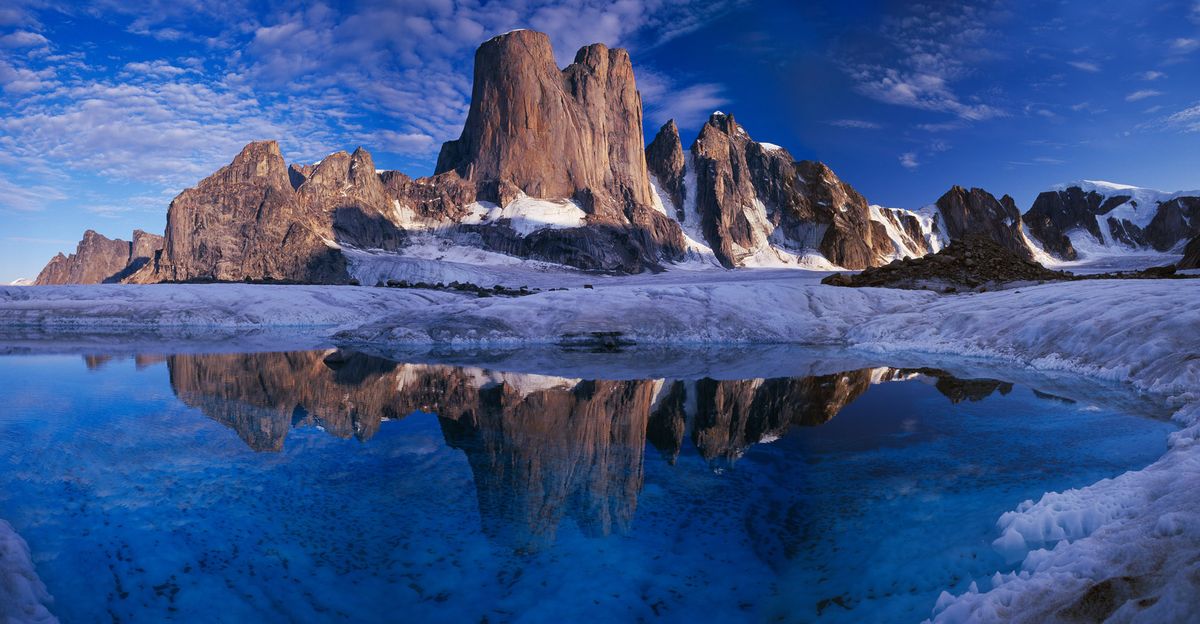Banff Film Festival’s World Tour visits for three-day run

Some of the most remote places and cultures on earth are coming to Spokane this week. They’ll be featured in the work of intrepid filmmakers who match outdoor skills and creativity with state of the art imaging technology.
Fresh from Alberta, the World Tour of flicks selected from last week’s Banff Mountain Film Festival will be screened at the Bing Crosby Theater Friday through Sunday.
Roughly two dozen films to be shown in the three-day run will lift audiences to the top of K2, the world’s second-highest peak, and drop them into the depths of the earth’s caving frontiers.
In between, viewers can expect to go paddling, skiing, boarding, biking along with some great story telling and insights on mountain culture.
As usual, the evenings will be sprinkled with suspense, awe, laughter and amazement at what people can risk and survive, said Phil Bridgers of Mountain Gear, which sponsors the World Tour in Spokane.
Bridgers was in Banff for the festival and a film-watching bender. He said he personally viewed 31 of the festival’s film competition finalists last week.
The 35th annual Banff festival was a showcase for the world’s best films on mountain subjects – climbing, culture, environment, exploration, adventure and sport.
This year’s event attracted 257 entries from 35 countries. Judges whittled the field to about 60 films screened during the nine-day festival before a jury awarded more than $40,000 in cash and prizes.
“Once again, the quality of the films and the grass roots productions have risen to another level because of the quality of cameras and editing,” he said.
Michael Boge of Mountain Fever in Coeur d’Alene also attended the festival. “The films this year were excellent and probably the best I have seen in Banff in the last seven years,” he said.
Boge sponsors the World Tour in Coeur d’Alene and Sandpoint during winter to raise money for youth charities in Peru and North Idaho.
In the next year, the World Tour will usher a selection of the competition finalists to 30 countries and 360 locations.
Spokane is among the first stops on the post-festival tour. The exact lineup is being determined this week as license agreements are worked out.
But Bridgers had a pretty solid slate of core films for the Spokane audience.
Expect to pucker up when a daredevil BASE jumper wearing a wing suit and helmet cam leaps out of a helicopter over The Matterhorn and jets down along a ridge sometimes skimming just 5-10 feet above the rocks.
At least two films play off productions that caused a stir among audiences last year.
Those who were amazed at teenage free-climbing phenom Alex Honnold’s solo of Yosemite’s Half Dome will marvel at The Swiss Machine ( www.youtube.com/watch? v=VUWBbepsdmY/), where Ueli Steck, perhaps the greatest speed alpinist, posts record-breaking ascents in the Alps before joining Honnold in Yosemite, where the duo makes a vertical sprint up The Nose of El Capitan in 2 hours, 47 minutes.
“Most good climbing teams take three days,” Bridgers said, putting the feat in perspective.
Viewers depressed by last year’s tragic film about a sea kayaker who died trying to become the first person to paddle from Australia to New Zealand will be buoyed by the story of two men who succeeded in his wake.
Crossing the Ditch (www.crossingtheditch.com .au/) tells of the 1,400-mile muscle-powered voyage in the treacherous Tasman Sea.
“They had a high-tech kayak with things like solar panels,” Bridgers said. “They paddled outside but had an enclosed cockpit. They finished in 62 days, including something like 11 days when they were trapped in a huge eddy so strong they couldn’t paddle out of it.”
They were on the water so long, barnacles began forming on the bottom of their kayak. But when they got in the water to clean them off and improve the performance of their boat, they attracted sharks.
The latest technology plays a big role in As It Happens (camp4collective .com /?p=30/), as two climbers file video dispatches from their attempt at the first ascent of Nepal’s 6,000-meter-high Tawoche Himal.
In contrast, Last Paradise (www.lastparadisefilm.com/) relies largely on archival film starting in the 1960s to follow a bunch of kids that launches its surfing prowess into extreme sport innovations from sea to snow.
“For example, they used their surf boards for snowboards, but they didn’t have bindings, so they were using suction cups to fasten themselves on their boards,” Bridgers said.
As always, terse films will add spark to the theater.
The Longest Way (www.thelongestway.com/ extras/thevideo/), winner of the award for best short mountain film, travels 4,000 miles across China in five minutes. It tells a complex story in a spare and creative way featuring a stop-motion chronicle of Christoph Rehage’s face and unleashed facial hair growth.